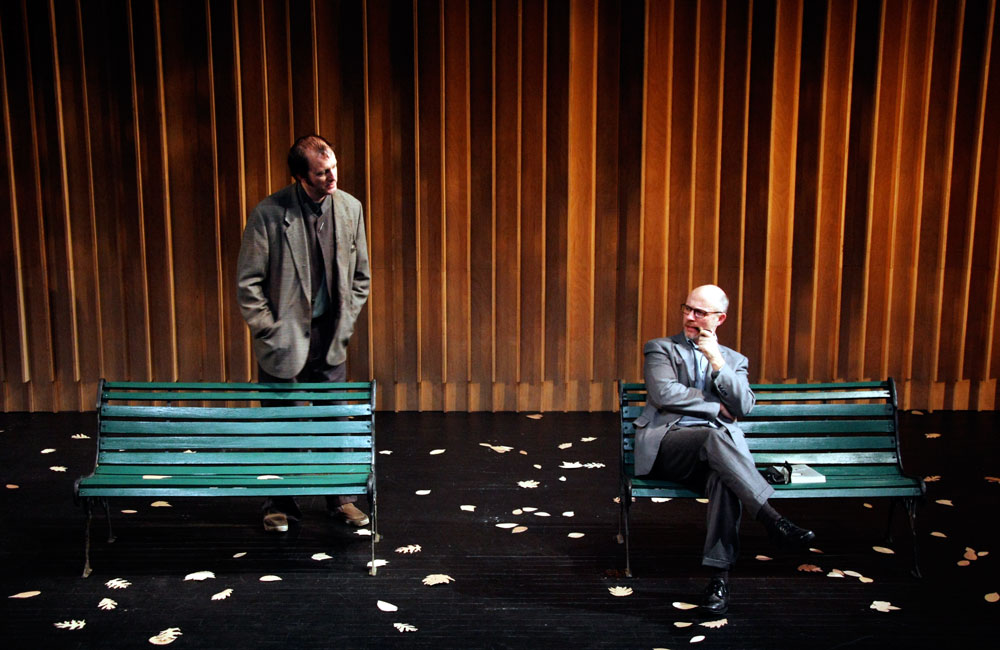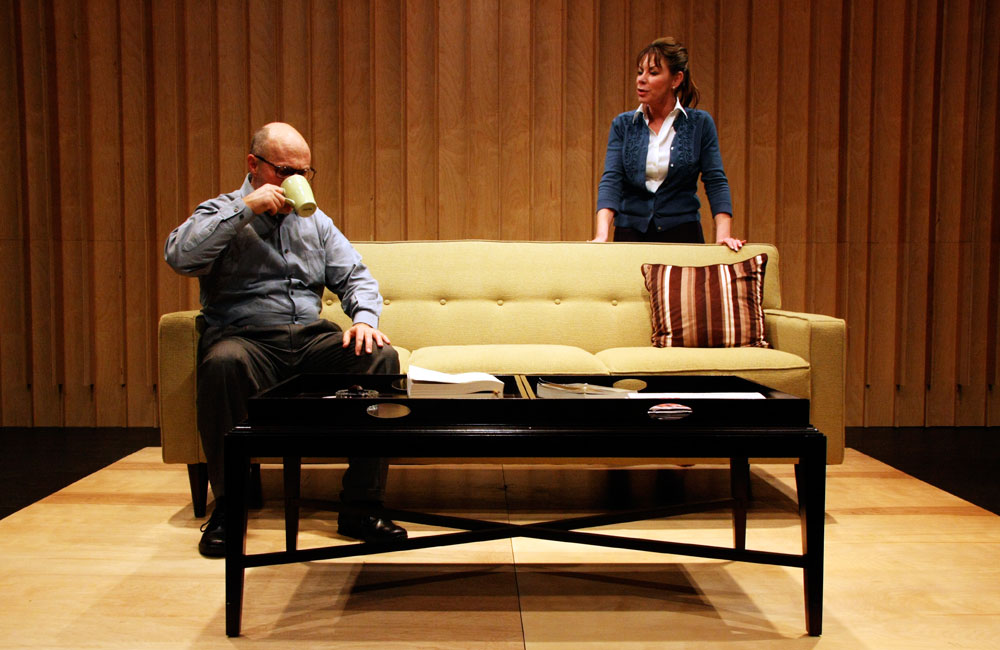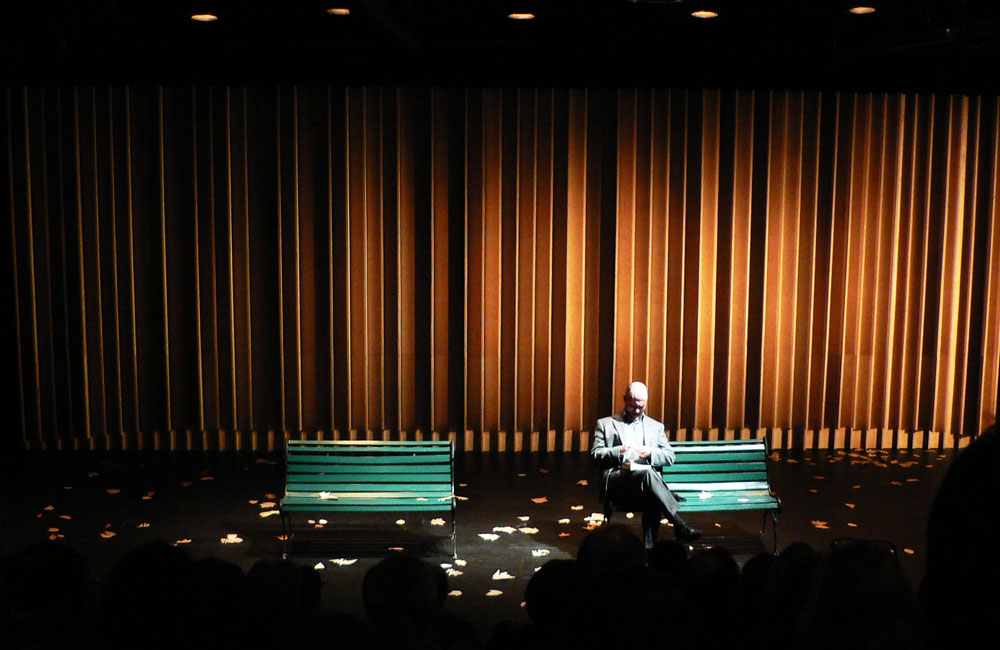AT HOME | AT THE ZOO
Set Design: Rick Martin | Lighting Design: Rick Martin
Costume Design: Star Moxley | Sound Design: Peter John Still
Scroll down to read Drew's director's note for At Home | At the Zoo at Boise Contemporary Theater.
At Home | At the Zoo by Edward Albee - Director's Note
Edward Albee wrote The Zoo Story in 1958 on the eve of his 30th birthday sitting at a rickety kitchen table, using a typewriter he “borrowed” from the Western Union offices where he worked as a messenger. After years of trying his hand at poetry and fiction, a stab at play writing was a kind of birthday present to himself. The one-act play that had poured out of him was greeted with enthusiasm by some friends, but met an all-too-predictable cold shoulder from New York theater producers. Fortunately, the play found its way into the hands of a German actor who translated it and spearheaded a world-premier production in Berlin in 1959. Sharing a bill with Samuel Beckett’s Krapp’s Last Tape, Die Zoo-Geschichte stunned its European audiences and Edward Albee, an outsider from the start, became a force (some would say THE force) for American theater to reckon with.
Forty-five years later, perhaps at the kitchen table of his painting and sculpture filled loft in Tribeca, Edward Albee wrote Home Life, another one-act play, to be paired with The Zoo Story for an evening of theater originally entitled Peter and Jerry. Commissioned by Hartford Stage Company, Home Life gave Albee the chance, after many years and many plays, to shed more light on (and raise more questions about) Peter, the book-reading Everyman whose encounter with Jerry in Central Park helped kick-start off-Broadway theater in the early 1960s. The resulting two-act play At Home at the Zoo bookends a singular career and showcases Albee’s trademark combination of wit, sensitivity and cruelty.
Wielding language like a surgeon’s scalpel, Edward Albee lays bare the bones and viscera of the human animal. He has said that his goal is not to frighten his audience, but to “terrify them.” Fittingly, Albee distills his theater down to its most essential elements: the actor, the word and the idea. Communication is a dangerously powerful, at times life-threatening, act. Over time, Albee’s writing has become perhaps less aggressive, but it is no less insistent in its challenge to audiences: “Participate in your own life—fully…You’re alive only once, as far as we know, and what could be worse than getting to the end of your life and realizing you hadn’t lived it?”
-Drew Barr




